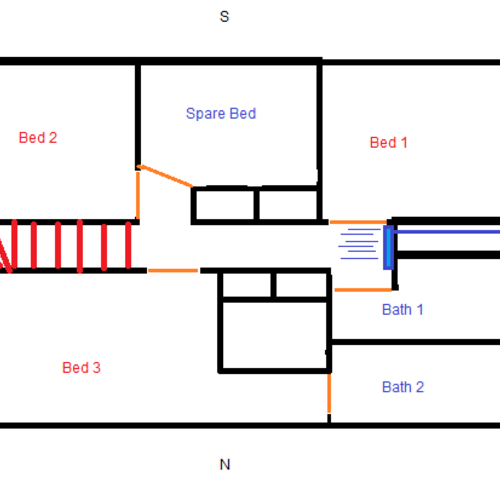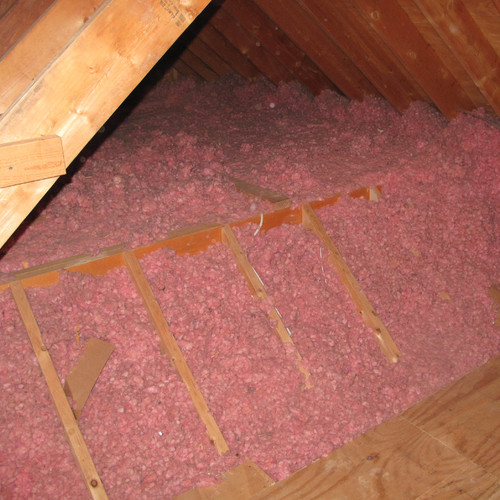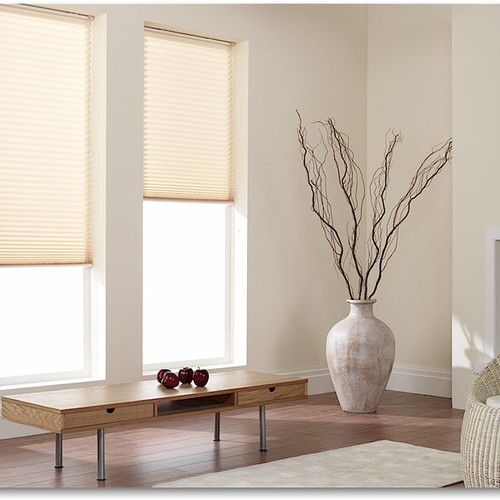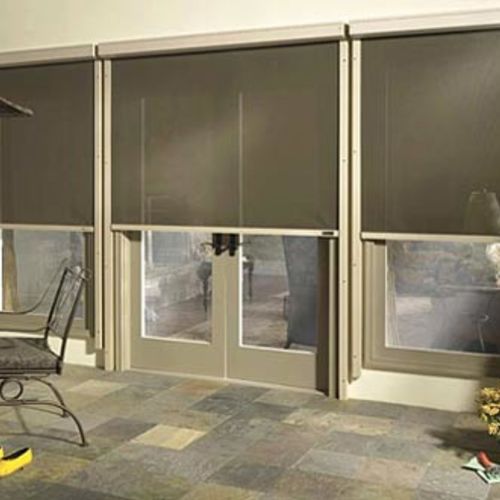
Image Credit: Alex Wilson
Welcome to summer. Burlington, Vermont hit a record 97°F the other day, and my place in West Dummerston reached 93°, with high humidity. What’s the best way to stay comfortable in weather like this — assuming that you’re not using mechanical air conditioning?
First, it’s important to understand that the goal isn’t really about temperature; it’s about comfort. Some very simple strategies can help you remain comfortable even with high air temperatures.
Dress for the conditions
Light, loose-fitting clothes — and as few of them as possible — will help keep you cool in hot weather. Shorts, loose-fitting shirts, blouses, and dresses allow more air circulation next to your skin and will keep you cooler.
Engineers actually have a measure for the insulating value of clothing and it’s impact on comfort — the “Clo” rating — that they use for modeling interior comfort conditions in buildings (a Clo of 0 corresponds to no clothing, and Clo of 1.0 for a business suit, with Clo values of different items of clothing additive). In a work environment, convince management to relax dress standards during hot weather and keep the air conditioning set point higher.
Move the air
Fans use relatively little electricity and by circulating air past your skin they provide evaporative cooling. They don’t lower the temperature (in fact, fans raise the air temperature slightly from the waste heat given off by the motors), but by generating air flow they raise the temperature at which you will be comfortable.
A ceiling fan or oscillating desk fan can easily raise your “comfort zone” by five to seven degrees. If you’re normally comfortable with an air temperature of 75°, you might be able to be comfortable at 80-82°F with a fan operating. Note that the fan doesn’t have any cooling benefit when you aren’t right there, however, so turn it off when you leave the room.
Keep sunlight out
Windows introduce a tremendous amount of heat into homes, so the simplest strategy for controlling heat gain is to shade windows. Overhangs above windows do a pretty good job with this on the south side of a house (they block the summer sun, which rises high overhead, while allowing the lower winter sun to reach the windows).
Shading east- and west-facing windows is more challenging. Awnings can work reasonably well, as can shade trees, vines, and annuals. A less common but highly effective shading strategy for these windows is to install exterior shade screens. These provide reasonably good visibility even when closed, yet block up to 90% of the solar gain.
It’s much better to block sunlight before it gets through your windows. Interior blinds provide shade and prevent glare, but once that sunlight gets into the house much of its heat will remain trapped indoors. Shading on the exterior is always preferable.
Close up the house
The simple strategy of closing up the house during the day and opening it up at night works well as long as the air temperature drops low enough at night and the outdoor humidity level isn’t too high. I often use this strategy — and, in fact, just closed our windows as the outdoor temperature rose above the indoor temperature.
Closing windows is a psychologically difficult strategy; it just seems wrong to close up the house on a hot day. But it makes a lot of sense in certain conditions. If you’re going to be out of the house during the day it’s a no-brainer.
Turn off the lights
Lights, appliances, televisions, stereo equipment, and anything else using electricity generates waste heat. Turn these devices off when you’re not using them. With lighting, replacing incandescent light bulbs (which convert 90% of the electricity into heat and only 10% into light) with compact fluorescent lamps (CFLs) or LED lights can dramatically reduce that waste heat, but turning lights off is even better.
In hot weather we try to cook outdoors as much as possible, so we’re not heating up the kitchen, and we run our dishwasher at night or avoid using it in the summer. And turn that CD player or TV off when you’re not actively listening or watching.
Other cooling strategies
There are lots of other strategies for controlling heat gain and maintaining comfort in our houses — from installing reflective roofing to replacing windows with low-solar-heat-gain windows and adding more insulation to your attic and walls, but most of these strategies are more expensive. You can do a lot with the simple, free or inexpensive strategies I’ve covered here.
Next week I’ll cover air conditioning.
Alex is founder of BuildingGreen, Inc. and executive editor of Environmental Building News. He also coauthored BuildingGreen’s special report on windows that just came out. To keep up with Alex’s latest articles and musings, you can sign up for his Twitter feed.
Weekly Newsletter
Get building science and energy efficiency advice, plus special offers, in your inbox.















4 Comments
Careful with roofing & window selection.
Low solar gain windows (particularly south facing windows) and heat-rejection roofing in heating dominated climates will pass up measurable amounts of passive gain in the winter and shoulder seasons, increasing the net annual energy use of the building. In US climate zones 3 or lower heat rejecting windows & roofing will usually work in your energy-use favor, but not very often in zones 5 & up.
The exception would be very low angle or flat roofs, where heat rejecting cool-roof materials are a net benefit in most US zones.
Reflective roofing to avoid air conditioning
Great article on things to do to reduce the need for air conditioning.
While theoretically I could have gained some winter solar heat by staying with dark shingles, I opted for a light-colored metal roof to reflect the summer solar heat and help avoid the need to buy an air conditioner. I recognize, as Dana said, that this will slightly increase my winter heat bill. My thinking was that by completely avoiding the electric bill associated with air conditioning, I would more than offset what winter heat gain might have come through my attic insulation.
On a different note, Alex, do you have any references to studies on external shade screens? I have a big west-facing window that drives in a lot of heat in the afternoon. I have an interior white cellular shade, but as you said, it would be better to reflect that heat while it is still outside the house. My window faces the front of the house and street, so if I can make the screen attractive, that would be great. My house is a tan stucco, so I was thinking maybe a tan screen to sort of match the wall.
Have you made that awning or
Have you made that awning or a pre customized one. Where you got it, it seems it adjustable and that is what I am looking for. Our windows need some renovation and that if I could get awnings like that that fit our window I will pursue to have that one. But since we are budget tight, just some partial repair is the only solution.. I like it because it add some coolness and breeze that passes through.. perhaps I will install awnings that is vinyl made and install atop of the window for the meantime.
Low-cost awning
Henry,
That wasn't a project I was involved with, and I'm not sure whether it's a homemade awning or a prefabricated one. It's on the house of a friend of mine in Florida. E-mail me directly if you'd like me to e-mail you some high-resolution photos that might help you figure out how to build such a unit: [email protected].
Log in or create an account to post a comment.
Sign up Log in